NASA Astronaut Scott Kelly Shared This Incredible Video Tonight, August 11, Showing "our Galactic Home"
NASA Astronaut Scott Kelly shared this incredible video tonight, August 11, showing "our galactic home" with the stars of the Milky Way. Kelly is living and working off the Earth, for the Earth aboard the station for a yearlong mission. Traveling the world more than 220 miles above the Earth, and at 17,500 mph, he circumnavigates the globe more than a dozen times a day conducting research about how the body adapts and changes to living in space for a long duration.
Video credit: NASA
More Posts from Nasa and Others
Finalists for a Future Mission to Explore the Solar System
We’ve selected two finalists for a robotic mission that is planned to launch in the mid-2020s! Following a competitive peer review process, these two concepts were chosen from 12 proposals that were submitted in April under a New Frontiers program announcement opportunity.
What are they?
In no particular order…
CAESAR

CAESAR, or the Comet Astrobiology Exploration Sample Return mission seeks to return a sample from 67P/Churyumov-Gerasimenko – the comet that was successfully explored by the European Space Agency’s Rosetta spacecraft – to determine its origin and history.

This mission would acquire a sample from the nucleus of comet Churyumov-Gerasimenko and return it safely to Earth.

Comets are made up of materials from ancient stars, interstellar clouds and the birth of our solar system, so the CAESAR sample could reveal how these materials contributed to the early Earth, including the origins of the Earth's oceans, and of life.
Dragonfly
A drone-like rotorcraft would be sent to explore the prebiotic chemistry and habitability of dozens of sites on Saturn’s moon Titan – one of the so-called ocean worlds in our solar system.

Unique among these Ocean Worlds, Titan has a surface rich in organic compounds and diverse environments, including those where carbon and nitrogen have interacted with water and energy.

Dragonfly would be a dual-quadcopter lander that would take advantage of the environment on Titan to fly to multiple locations, some hundreds of miles apart, to sample materials and determine surface composition to investigate Titan's organic chemistry and habitability, monitor atmospheric and surface conditions, image landforms to investigate geological processes, and perform seismic studies.
What’s Next?
The CAESAR and Dragonfly missions will receive funding through the end of 2018 to further develop and mature the concepts. It is planned that from these, one investigation will be chosen in the spring of 2019 to continue into subsequent mission phases.

That mission would be the fourth mission in the New Frontiers portfolio, which conducts principal investigator (PI)-led planetary science missions under a development cost cap of approximately $850 million. Its predecessors are the New Horizons mission to Pluto and a Kuiper Belt object, the Juno mission to Jupiter and OSIRIS-REx, which will rendezvous with and return a sample of the asteroid Bennu.
Key Technologies
We also announced that two mission concepts were chosen to receive technology development funds to prepare them for future mission opportunities.

The Enceladus Life Signatures and Habitability (ELSAH) mission concept will receive funds to enable life detection measurements by developing cost-effective techniques to limit spacecraft contamination on cost-capped missions.

The Venus In situ Composition Investigations (VICI) mission concept will further develop the VEMCam instrument to operate under harsh conditions on Venus. The instrument uses lasers on a lander to measure the mineralogy and elemental composition of rocks on the surface of Venus.
The call for these mission concepts occurred in April and was limited to six mission themes: comet surface sample return, lunar south pole-Aitken Basin sample return, ocean worlds, Saturn probe, Trojan asteroid tour and rendezvous and Venus insitu explorer.
Make sure to follow us on Tumblr for your regular dose of space: http://nasa.tumblr.com.
Mercury In the Spotlight
For more than seven hours on Monday, May 9, Mercury will be visible as a tiny black dot crossing the face of the sun. This rare event – which happens only slightly more than once a decade – is called a transit.

Although Mercury whips around the sun every 88 days – over four times faster than Earth – the three bodies rarely align. Because Mercury orbits in a plane 7 degrees tilted from Earth’s orbit, it usually darts above or below our line of sight to the sun. As a result, a Mercury transit happens only about 13 times a century. The last one was in 2006, and the next one isn’t until 2019.

When: On May 9, shortly after 7:00 a.m. EDT, Mercury will appear as a tiny black dot against a blazing backdrop, traversing the sun’s disk over seven and a half hours. Mercury will cross the edge of the sun (ingress) after 7:00 a.m. EDT. The mid-transit point will occur a little after 10:45 a.m. EDT, with egress around 2:30 p.m. EDT.
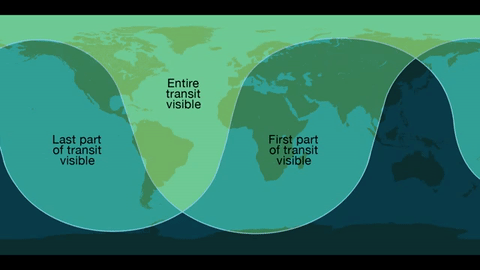
Where: Skywatchers in Western Europe, South America and eastern North America will be able to see the entirety of the transit. The entire 7.5-hour path across the sun will be visible across the Eastern U.S. – with magnification and proper solar filters – while those in the West can observe the transit in progress at sunrise.

Safety!
Unlike the 2012 Venus transit of the sun, Mercury is too small to be visible without magnification from a telescope or high-powered binoculars. Both must have safe solar filters made of specially-coated glass or Mylar; you can never look directly at the sun. We’re offering several avenues for the public to view the event without specialized and costly equipment, including images on NASA.gov, a one-hour NASA Television special, and social media coverage.

The Science…Why are Planetary Transits Important?
Transits like this allowed scientists in the 17th century to make the first estimates of Earth’s distance from the sun. Transit observations over the past few centuries have also helped scientists study everything from the atmosphere of Venus to the slight shifts in Mercury’s orbit that could only be explained by the theory of general relativity. Because we know Mercury’s size and location precisely, this transit will help scientists calibrate telescopes on solar observatories SDO, SOHO, and Hinode.

Transits can also teach us more about planets – both in and out of our solar system. The Venus transit in 2012 provided observations of the planet's atmosphere. Transits are also the main way we find planets outside the solar system, called exoplanets.

The transit method looks for a drop in the brightness of a star when a planet passes in front of it. This method will not find every planet – only those that happen to cross our line of sight from Earth to the star. But with enough sensitivity, the transit method through continuous monitoring is a great way to detect small, Earth-size planets, and has the advantage of giving us both the planet’s size (from the fraction of starlight blocked), as well as its orbit (from the period between transits). Our Kepler/K2 mission uses this method to find exoplanets, as will the Transiting Exoplanet Survey Satellites, or TESS, following its launch in 2017/2018.
We will stream a live program on NASA TV and the agency’s Facebook page from 10:30 to 11:30 a.m. -- an informal roundtable during which experts representing planetary, heliophysics and astrophysics will discuss the science behind the Mercury transit. Viewers can ask questions via Facebook and Twitter using #AskNASA.
Make sure to follow us on Tumblr for your regular dose of space: http://nasa.tumblr.com
Take Your GIF Game to Cosmic Levels & React Like a NASA Astronaut!
We partnered with GIPHY to help take your GIF game to cosmic levelssss. As the Artemis generation who will witness a whole new era of space travel, we wanted make sure you could express yourself... like an astronaut!
So, if you want to show some love...

... or you’re pumped we’re half way to Friday ...

We’ve got you covered.

Don’t miss our whole collection of astronaut reactions!
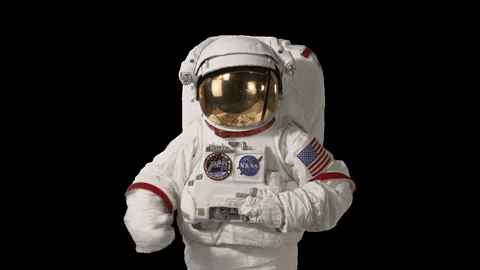
Want to use them on your device?

Type ‘NASAReaction’ in your device’s GIPHY keyboard...

.... and choose your favorite!

You can access our full collection of official NASA astronaut GIFs by visiting: https://giphy.com/nasa/reaction-pack
Make sure to follow us on Tumblr for your regular dose of space: http://nasa.tumblr.com
Solar System: Things to Know This Week
Has Cassini inspired you? Learn more about dwarf planet Ceres, get the latest images from the Keck Observatory and more!

1. Has Cassini Inspired You?
During nearly two decades in space, Cassini has been a source of inspiration to many. Has Cassini inspired you? Upload your artwork, photos, poems or songs to the social media platform of your choice, such as Instagram, YouTube, Facebook, Twitter or others. Tag it #CassiniInspires. Or, send it directly to: cassinimission@jpl.nasa.gov. We'll highlight some of the creations on this page. See examples and details at: saturn.jpl.nasa.gov/mission/cassiniinspires/

2. Dawn’s Shines a Light on Ceres
Our Dawn mission has found evidence for organic material on Ceres, a dwarf planet and the largest body in the main asteroid belt between Mars and Jupiter. Learn more: solarsystem.nasa.gov/news/2017/02/17/dawn-discovers-evidence-for-organic-material-on-ceres

3. Into the Vortex
A new device called the vortex coronagraph was recently installed inside NIRC2 (Near Infrared Camera 2) at the W.M. Keck Observatory in Hawaii and has delivered its first images, showing a ring of planet-forming dust around a star, and separately, a cool, star-like body, called a brown dwarf, lying near its companion star.
4. Enceladus: Cassini Cracks the Code of the Icy Moon
A puzzling sensor reading transformed our Cassini Saturn mission and created a new target in the search for habitable worlds beyond Earth, when on Feb. 17, 2005, Cassini made the first-ever close pass over Saturn’s moon. Since our two Voyager spacecraft made their distant flybys of Enceladus about 20 years prior, scientists had anticipated the little moon would be an interesting place to visit. Enceladus is bright white -- the most reflective object in the solar system, in fact -- and it orbits in the middle of a faint ring of dust-sized ice particles known as Saturn’s E ring. Scientists speculated ice dust was being kicked off its surface somehow. But they presumed it would be, essentially, a dead, airless ball of ice.
What Cassini saw didn't look like a frozen, airless body. Instead, it looked something like a comet that was actively emitting gas. The magnetometer detected that Saturn’s magnetic field, which envelops Enceladus, was perturbed above the moon's south pole in a way that didn't make sense for an inactive world. Could it be that the moon was actively replenishing gases it was breathing into space? Watch the video.

5. Descent Into a Frozen Underworld
Our planet's southernmost active volcano reaches 12,448 feet (3,794 meters) above Ross Island in Antarctica. It's a good stand-in for a frozen alien world, the kind we want to send robots to someday. Learn more: solarsystem.nasa.gov/news/2017/02/13/descent-into-a-frozen-underworld
Discover the full list of 10 things to know about our solar system this week HERE.
Follow us on Tumblr for your regular dose of space: http://nasa.tumblr.com
Counting Down to ICON's Launch
In October 2018, we're launching the Ionospheric Connection Explorer, or ICON, to study Earth's dynamic interface to space.

The region of Earth's atmosphere on the edge of space plays a crucial role in our technology and exploration. This is where many of our satellites — including the International Space Station — orbit, and changing conditions in this region can cause problems for those satellites and disrupt communications signals.
This part of the atmosphere is shaped by a complicated set of factors. From below, regular weather on Earth can propagate upwards and influence this region. From above, electric and magnetic fields and charged particles in space — collectively called space weather — can also trigger changes. ICON's goal is to better understand this region and how it's shaped by these outside influences.
10-mile-per-hour sensitivity
Though the ICON spacecraft zooms around Earth at upwards of 14,000 miles per hour, its wind-measuring instrument, named MIGHTI, can detect changes in wind speed smaller than 10 miles per hour. MIGHTI measures the tiny shifts in color caused by the motion of glowing gases in the upper atmosphere. Then, by making use of the Doppler effect — the same phenomenon that makes an ambulance siren change pitch as it passes you — scientists can figure out the gases' speed and direction.

97-minute orbital period
ICON circles Earth in just over an hour and a half, completing nearly 15 orbits per day. Its orbit is inclined by 27 degrees, so over time, its measurements will completely cover the latitudes scientists are most interested in, near the equator.

8 1/3-foot solar panel
ICON doesn't carry any onboard fuel. Instead, its single solar panel — measuring about 100 inches long and 33 inches wide, a little bit bigger than a standard door — produces power for the spacecraft. In science mode, ICON draws about 209-265 Watts of power.
7 years of teamwork
Now getting ready for launch, the ICON team has been hard at work ever since the idea for the mission was selected for further study in 2011.
634 pounds
How much does good science weigh? In ICON's case, about as much as vending machine. The observatory weighs 634 pounds altogether.
5 snapshots per minute from FUV
Because ICON travels so fast, its Far Ultraviolet instrument takes eight snapshots per second of passing structures. This avoids blurring the images and captures the fine detail scientists need. But available bandwidth only allows FUV to send 5 images per minute, so the instrument uses a de-blurring technique called time-delay integration to combine 12 seconds' worth of data into a single image.

Image credit: Mark Belan
4 types of instruments collecting data in tandem
ICON carries four distinct instruments to study Earth's boundary to space.
2 MIGHTIs (Michelson Interferometer for Global High-resolution Thermospheric Imaging): Built by the Naval Research Laboratory in Washington, D.C., to observe the temperature and speed of the neutral atmosphere. There are two identical MIGHTI instruments onboard ICON.
2 IVMs (Ion Velocity Meter): Built by the University of Texas at Dallas to observe the speed of the charged particle motions, in response to the push of the high-altitude winds and the electric fields they generate. ICON carries two, and they are the mission’s only in situ instruments.
EUV (Extreme Ultra-Violet instrument): Built by the University of California, Berkeley to capture images of oxygen glowing in the upper atmosphere, in order to measure the height and density of the daytime ionosphere.
FUV (Far Ultra-Violet instrument): Built by UC Berkeley to capture images of the upper atmosphere in the far ultraviolet light range. At night, FUV measures the density of the ionosphere, tracking how it responds to weather in the lower atmosphere. During the day, FUV measures changes in the chemistry of the upper atmosphere — the source for the charged gases found higher up in space.
360 miles above Earth
ICON orbits about 360 miles above Earth, near the upper reaches of the ionosphere — the region of Earth's atmosphere populated by electrically charged particles. From this vantage point, ICON combines remote measurements looking down along with direct measurements of the material flowing around it to connect changes throughout this region.

2 missions working together
NASA's GOLD mission — short for Global-scale Observations of the Limb and Disk — launched aboard a commercial communications satellite on Jan. 25, 2018. From its vantage point in geostationary orbit over Brazil, GOLD gets a full-disk view of the same region of space that ICON studies, helping scientists connect the big picture with the details.
1 gigabit of data per day
Together, ICON's instruments produce and downlink about 1 gigabit of data per day — about 125 megabytes. This adds up to about 1 gigabyte per week. ICON produces 10 different data products, ranging from measurements of wind speeds and ionospheric density to more complex models, that will help scientists shed new light on this ever-changing region.
ICON’s launch is scheduled for 4 a.m. EDT on Oct. 26, and NASA TV coverage begins at 3:45 a.m. Stay tuned on Twitter and Facebook for the latest on ICON.
Make sure to follow us on Tumblr for your regular dose of space: http://nasa.tumblr.com.
Black (Hole) Friday!
It’s Black Friday, but for us, it’s the annual Black Hole Friday! Today, we’ll post awesome images and information about black holes.

A black hole is a place in space where gravity pulls so much that even light cannot get out. The gravity is so strong because matter has been squeezed into a tiny space…sort of like all of those shoppers trying to fit into the department stores today.
Because no light can get out, people can’t see black holes. They are invisible. Space telescopes with special tools can help find black holes (sort of how those websites help you find shopping deals).

How big are black holes? Black holes can be big or small…just like the lines in all of the stores today. Scientists think the smallest black holes are as small as just one atom. These black holes are very tiny but have the mass of a large mountain! Mass is the amount of matter, or “stuff”, in an object.

So how do black holes form? Scientists think the smallest black holes formed when the universe began. Stellar black holes are made when the center of a very big star falls upon itself, or collapses. When this happens, it causes a supernova. A supernova is an exploding star that blasts part of the star into space. Scientists think supermassive black holes were made at the same time as the galaxy they are in.
For more fun facts and information about black holes, be sure to follow us on social media.
Make sure to follow us on Tumblr for your regular dose of space: http://nasa.tumblr.com

Up for some virtual cloud watching? ☁️
What do you see in Jupiter's hazy atmosphere?
Our NASA JunoCam mission captured this look at the planet’s thunderous northern region during the spacecraft’s close approach to the planet on Feb. 17, 2020.
Some notable features in this view are the long, thin bands that run through the center of the image from top to bottom. Juno has observed these long streaks since its first close pass by Jupiter in 2016.
Image Credits: Image data: NASA / JPL / SwRI / MSSS Image Processing: Citizen Scientist Eichstädt
Make sure to follow us on Tumblr for your regular dose of space: http://nasa.tumblr.com.
Questions coming up from….
@teamadamsperret: Congrats on your PhD!! When people ask what you do, what's your reply?
@Anonymous: How does it feel, working in NASA?
@moonlighy: How did you find your love for this job?
@redbullanddepression: what the prettiest star in the sky in your opinion? also, you are a great role model as a queer woman who is attending university next year to major in aerospace engineering!!!
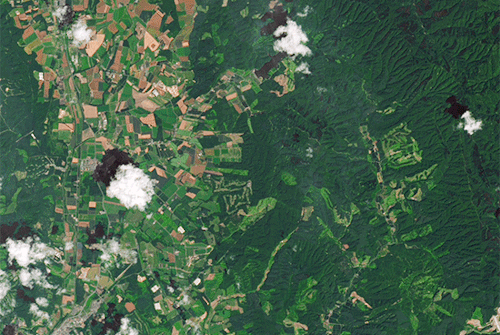
Landslides in Japan
On Sept. 6, 2018, shortly after the remnants of Typhoon Jebi drenched southern Hokkaido, a powerful earthquake rattled the Japanese island. The 6.6-magnitude quake shook the surface enough to unleash hundreds of landslides.
The Landsat 8 satellite acquired imagery of the widespread damage. An image acquired on Sept. 15, 2018, shows mud and debris in a hilly area east of Abira. For comparison, the previous image shows the same area on July 26, 2017.
Read more about this
Make sure to follow us on Tumblr for your regular dose of space: http://nasa.tumblr.com.
What’s Up for November 2016
What’s Up for November: Venus at sunset, Jupiter at dawn, your last evening glimpse of Saturn until spring, and more meteors!

Through November 3, catch glimpses of a gibbous Venus, a crescent moon and ringed Saturn in the southwest sky just after sunset.

Wake up before sunrise every day this month to see Jupiter just above Spica, the brightest star in the constellation Virgo, shining in the east-southeast sky.
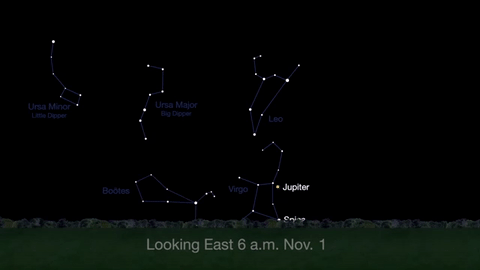
Just before dawn on November 23-24, see the waning crescent moon just above Jupiter.
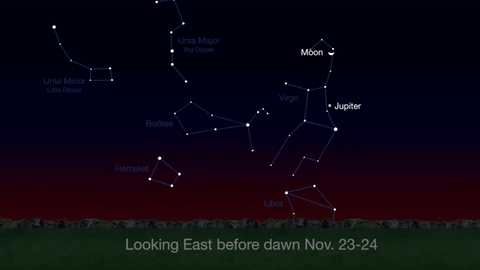
November is a great time to see the constellation Ceres as it glides past Cetus, the Whale and you will be able to see the dwarf planet move relative to the background stars, but you’ll need a telescope for this one.
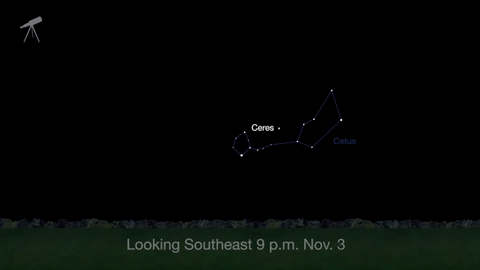
This month, just like last month, there will be three meteor showers--the Northern Tuarids, the Leonids and the November Orionids.
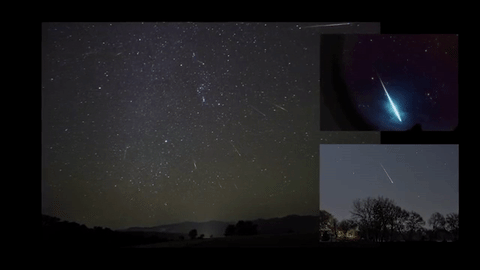
Watch the full November “What’s Up" video for more:
Make sure to follow us on Tumblr for your regular dose of space: http://nasa.tumblr.com.
-
 letoseezthings reblogged this · 3 years ago
letoseezthings reblogged this · 3 years ago -
 gnomeshill liked this · 3 years ago
gnomeshill liked this · 3 years ago -
 sweetbutterbliss reblogged this · 3 years ago
sweetbutterbliss reblogged this · 3 years ago -
 sweetbutterbliss liked this · 3 years ago
sweetbutterbliss liked this · 3 years ago -
 runningweightlesssun-blog liked this · 6 years ago
runningweightlesssun-blog liked this · 6 years ago -
 short-redhead reblogged this · 7 years ago
short-redhead reblogged this · 7 years ago -
 spacecolour reblogged this · 7 years ago
spacecolour reblogged this · 7 years ago -
 lilyhouses liked this · 7 years ago
lilyhouses liked this · 7 years ago -
 whenthewhat-blog1 liked this · 7 years ago
whenthewhat-blog1 liked this · 7 years ago -
 innerchaosdreamland liked this · 8 years ago
innerchaosdreamland liked this · 8 years ago -
 joyful-vampire liked this · 8 years ago
joyful-vampire liked this · 8 years ago -
 heyyochelle reblogged this · 8 years ago
heyyochelle reblogged this · 8 years ago -
 heyyochelle liked this · 8 years ago
heyyochelle liked this · 8 years ago -
 mrzugzwang liked this · 8 years ago
mrzugzwang liked this · 8 years ago -
 kateuba liked this · 8 years ago
kateuba liked this · 8 years ago -
 bassandtacos reblogged this · 8 years ago
bassandtacos reblogged this · 8 years ago -
 bassandtacos liked this · 8 years ago
bassandtacos liked this · 8 years ago -
 femalehorror liked this · 8 years ago
femalehorror liked this · 8 years ago -
 voodoo-mon-prinzessen-blog liked this · 9 years ago
voodoo-mon-prinzessen-blog liked this · 9 years ago -
 ryangriffinblog-blog reblogged this · 9 years ago
ryangriffinblog-blog reblogged this · 9 years ago -
 emparallel liked this · 9 years ago
emparallel liked this · 9 years ago -
 flamexec liked this · 9 years ago
flamexec liked this · 9 years ago -
 galaxyyy7 reblogged this · 9 years ago
galaxyyy7 reblogged this · 9 years ago -
 deanwinchestergf liked this · 9 years ago
deanwinchestergf liked this · 9 years ago -
 your-average-joke liked this · 9 years ago
your-average-joke liked this · 9 years ago -
 shadowedseas reblogged this · 9 years ago
shadowedseas reblogged this · 9 years ago -
 rameno0dles reblogged this · 9 years ago
rameno0dles reblogged this · 9 years ago -
 ventidivacup reblogged this · 9 years ago
ventidivacup reblogged this · 9 years ago -
 11-mother-of-wolves-11 liked this · 9 years ago
11-mother-of-wolves-11 liked this · 9 years ago -
 ninja-roach reblogged this · 9 years ago
ninja-roach reblogged this · 9 years ago -
 dumbhugs reblogged this · 9 years ago
dumbhugs reblogged this · 9 years ago -
 agentenaranjo reblogged this · 9 years ago
agentenaranjo reblogged this · 9 years ago -
 dramatic-n-crazy liked this · 9 years ago
dramatic-n-crazy liked this · 9 years ago -
 726886999 liked this · 9 years ago
726886999 liked this · 9 years ago -
 shiningbangtan-blog reblogged this · 9 years ago
shiningbangtan-blog reblogged this · 9 years ago -
 archaeawesomeopteryx reblogged this · 9 years ago
archaeawesomeopteryx reblogged this · 9 years ago
Explore the universe and discover our home planet with the official NASA Tumblr account
1K posts